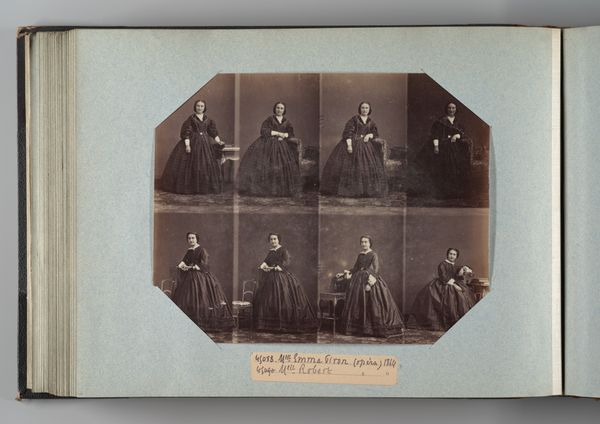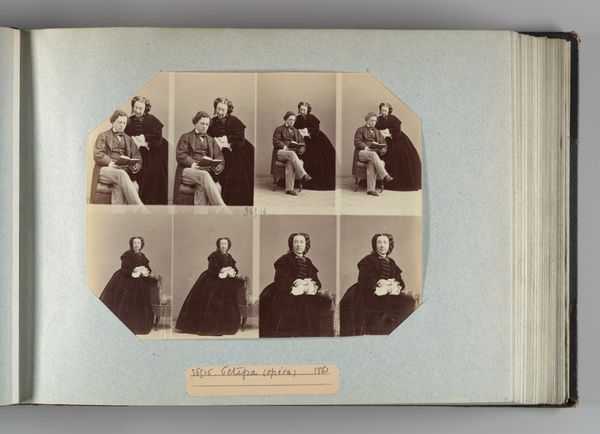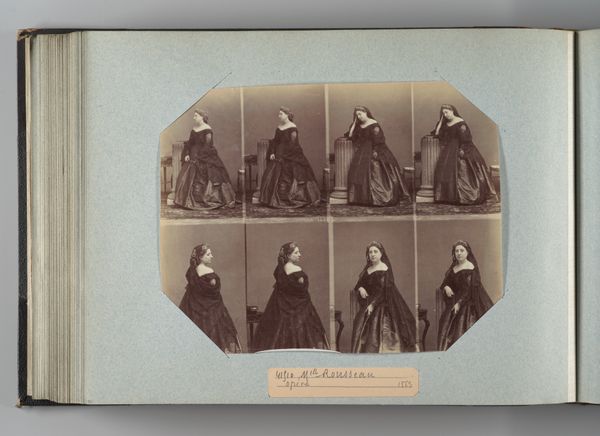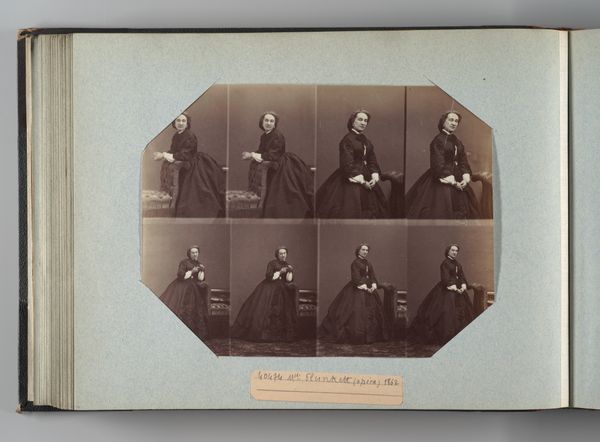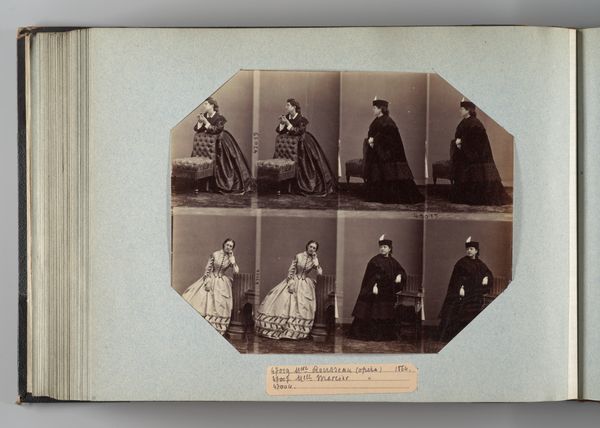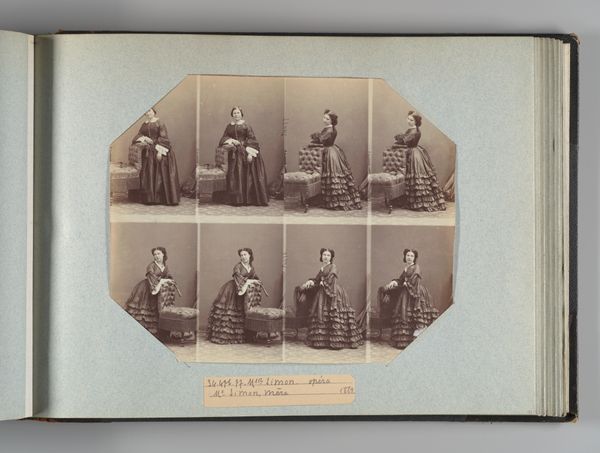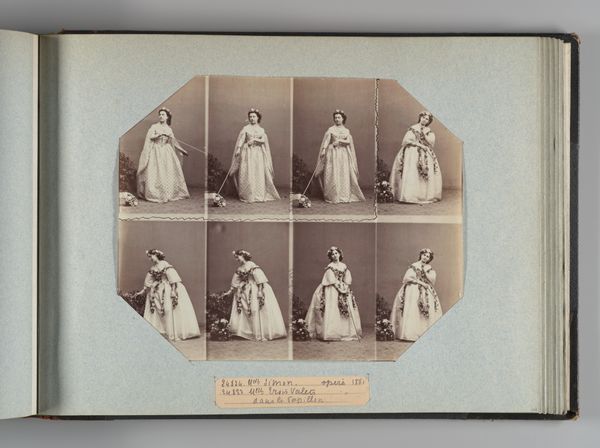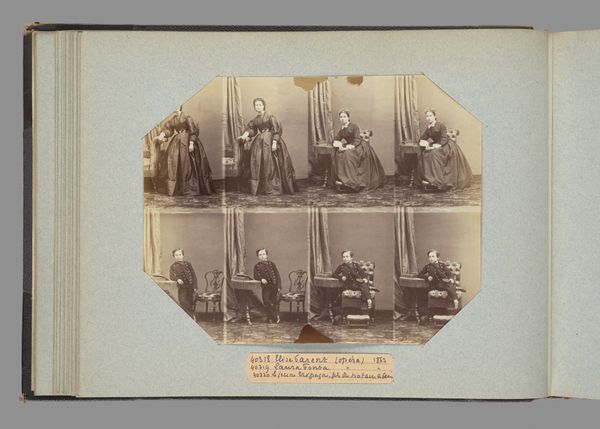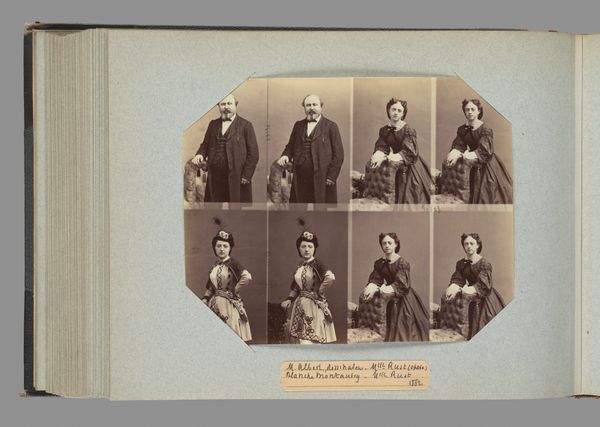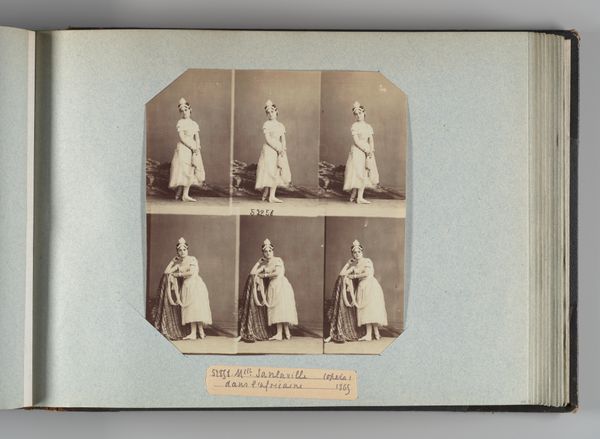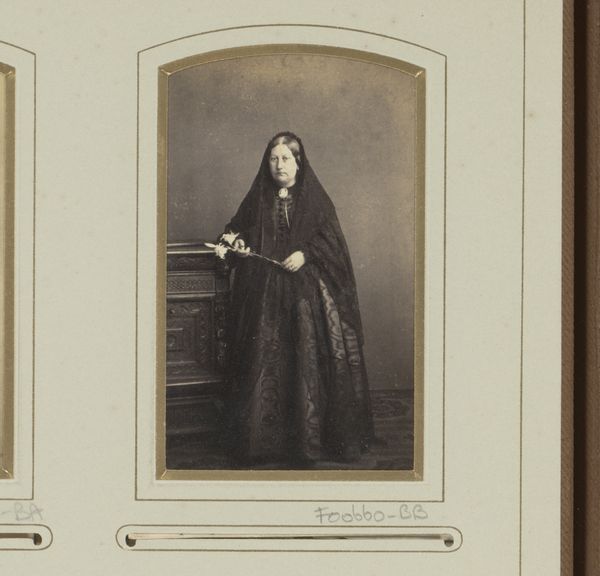
Dimensions: Image: 7 3/8 × 9 1/4 in. (18.8 × 23.5 cm) Album page: 10 3/8 × 13 3/4 in. (26.3 × 35 cm)
Copyright: Public Domain
Editor: This is “Mlle Plunkett,” a daguerreotype from 1862 by André-Adolphe-Eugène Disdéri. What strikes me immediately is the repetition, the eight nearly identical poses arranged so meticulously. What do you make of the formal aspects of this piece? Curator: Note the albumen print, with its sepia tones rendering the textures in such rich detail. Disdéri’s innovative use of the carte-de-visite format facilitates a serial reading, doesn’t it? This repetition is not merely for multiplication but to explore the subtle variations within a constrained framework. How does the arrangement of these images affect your reading of the subject, Mlle Plunkett? Editor: It makes me think about capturing movement and different angles. Each view offers a slightly different perspective, so they seem to create a sense of depth. Also, why present one sitter with this effect, do you think? Curator: Indeed. Disdéri collapses time and perspective, offering us a multi-faceted view within a single frame. This prefigures later cinematic techniques, no? But consider the composition of each individual frame. The deliberate arrangement of Mlle Plunkett’s figure, her gown creating dynamic lines against the stark background, highlights the inherent tension between stasis and movement. What do you observe in terms of light? Editor: The light seems very even and flat. This reminds me, in an odd way, of certain minimalist approaches! I also learned so much about photography and perspective from what you said! Curator: Precisely. Disdéri has produced a matrix not merely documenting her image, but also demonstrating the structure and inherent potential within the photographic medium. Now that we look closer, these minute modulations and repetitions show more intent, no?
Comments
No comments
Be the first to comment and join the conversation on the ultimate creative platform.
